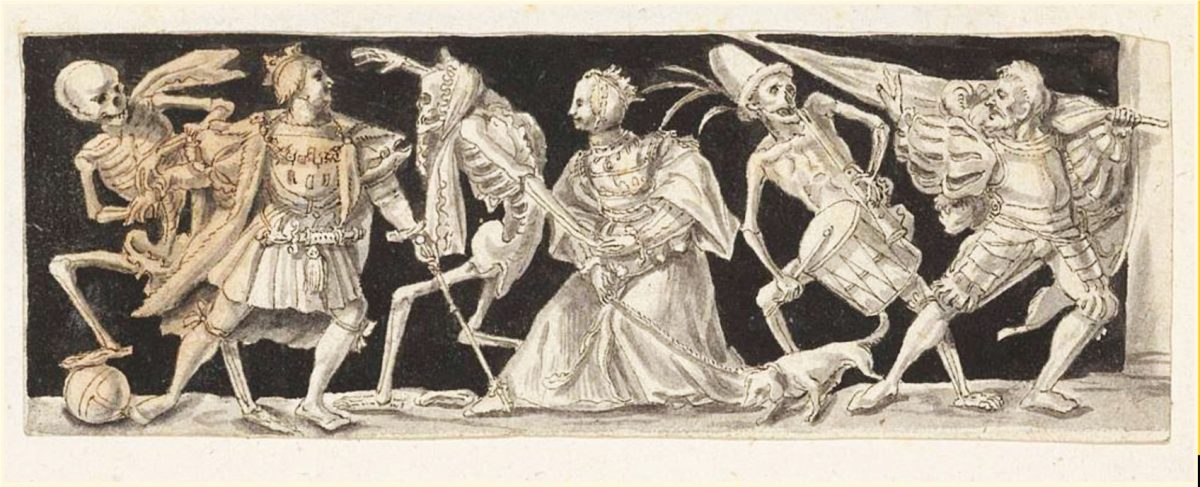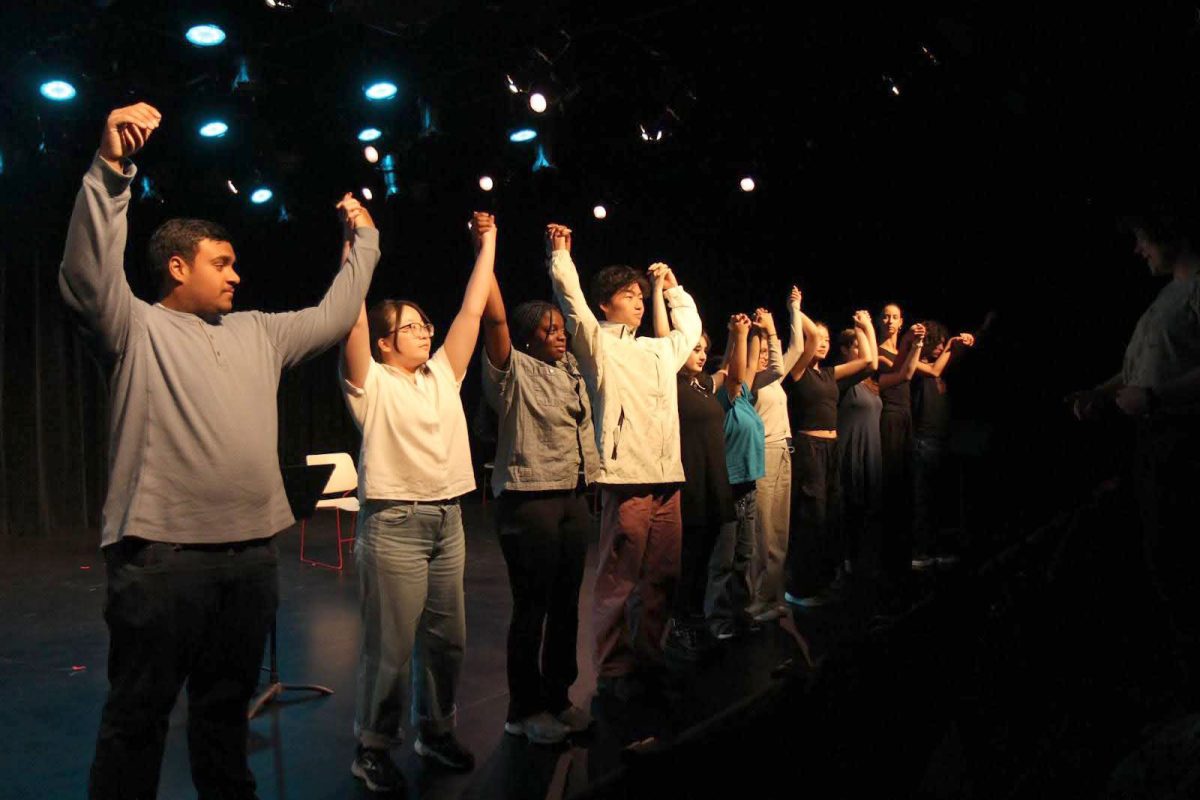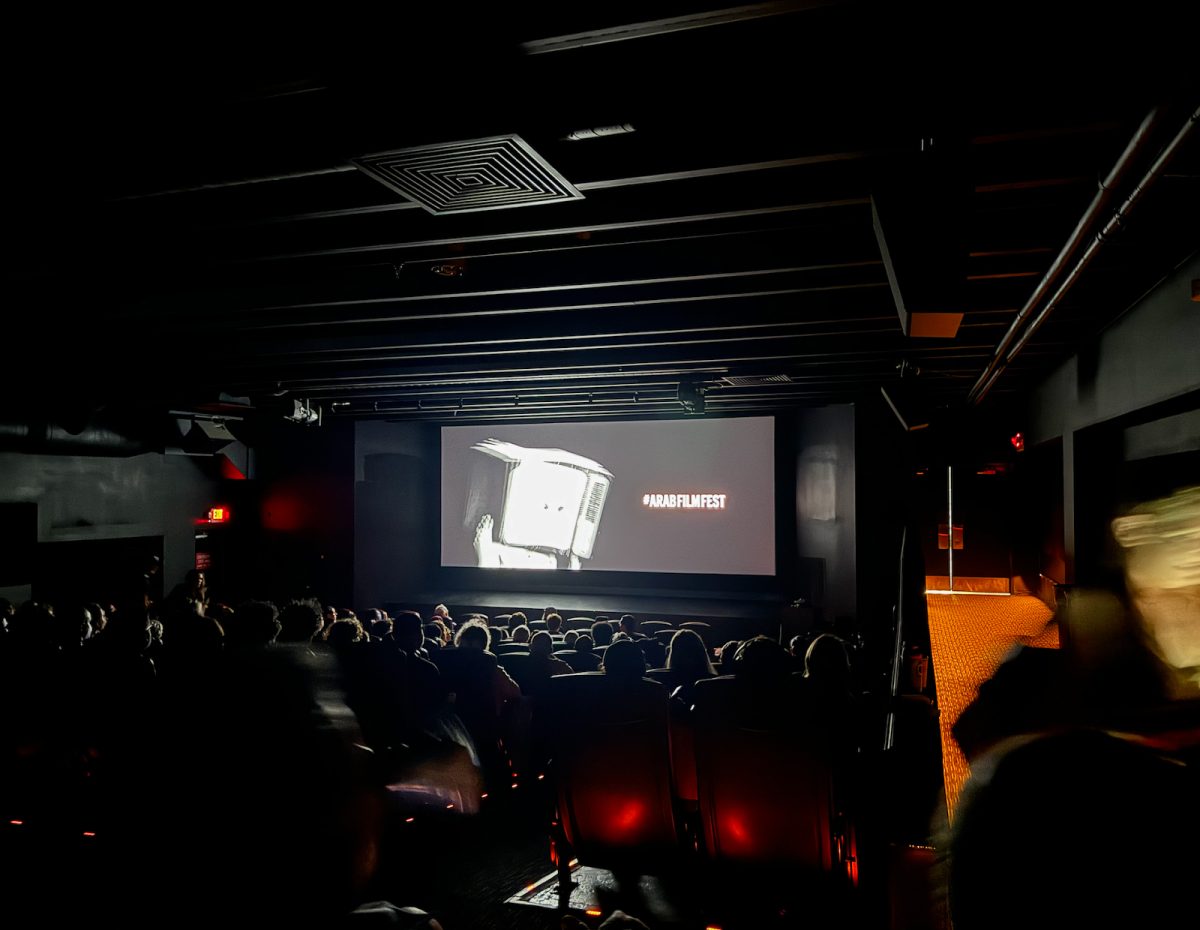Mark your calendars. This Sunday, Oct. 13, the Macalester Orchestra will be performing “Danse Macabre,” a seasonally appropriate spooky waltz in G minor composed by Camille Saint-Saens. Typically the orchestra would have performed at MacFest, but this year, the conductors of Macalester’s music groups decided MacFest would be too early to debut their semester’s repertoire. Instead, there will be a one-off Jamboree, where musical groups at Macalester will each conduct a short performance in succession. These groups include the African Music Ensemble, the Asian Music Ensemble, Chorale and Concert Choir, Mac Jazz, the Wind Symphony and the Symphony Orchestra.
“Danse Macabre” is a particularly fascinating composition, characterized by its aberrant musical structure and thematic morbidity. The piece was written in 1874, and the French title translates to “The Dance of Death.” This chilling waltz references artistic and cultural depictions of death from medieval Europe, which dealt with the acceptance of death’s inevitability and power over humanity as an “all-equalizing” force.
Murals, paintings and frescoes from the medieval period depict skeletons amongst the living. Giacomo Borlone’s five-part fresco, the “Disciplini Oratory” (or “The Triumph of Death”) from 1485, is a particularly iconic depiction of “danse macabre” – lively skeletons intermingle with humans as they wield rifles, banners and shoot arrows. These artistic depictions simultaneously reflect models of Christian interactions with the afterlife and the devil – a personified, often skeletal figure, Death is a common motif across portrayals. The Middle Ages saw great tragedy and loss across Europe, from the Black Plague to the Hundred Years’ War, which might explain how the popularity of “danse macabre” grew throughout the centuries in media depictions and popular culture.
Saint-Saens wrote “Danse Macabre” based on an 1868 poem by Henri Cazalis, a French physician and writer. The poem describes the “zig/zag” dance of skeletons, to the tune of Death’s violin, the cracking of skeletons’ bones and a crowd where the king dances among peasants. Violins are a key component of Death’s frenzied dance and a highlight of this piece; the performance will feature solo violinist Sarah Dunn ’26. The poem concludes with “Oh! La belle nuit pour le pauvre monde! Et vive la mort et l’égalité!,” (Oh, a beautiful night for the poor world, long live death and equality!) which speaks ironically to Death’s equalizing force and France’s national motto. Saint-Saens represented this poem’s playful and passionate depictions of Death’s dance through the piece’s musicality, which one might assume was an appreciated and refreshing novelty from the traditionally mellow classical music genre.
Yet initially, the piece was not well-received. Audiences complained of its screeching, eerie and decidedly un-mellifluous sound, and they were not wrong. One particular technique the piece employs is called “col legno” (with wood, in Italian) wherein players flip their bows upside down and tap the wood of the bow on the strings, as opposed to the bow hair. “Col legno” evokes an eerie clacking sound, emphasizing the sound of wood on metal while muting a note’s intonation. In this piece, it aims to replicate the sound of chattering skeleton bones as skeletons dance. The string instruments participate in “col legno,” as well as a xylophone which enhances this bony motif.
Staccato, or playing notes in a detached, separated way, produces a feeling of sharp, orderly rhythm to the song, akin to the sound of a chiming clock. Cellos, basses and violas play staccato throughout the piece, which maintains the waltz’s pulse, especially as its pace accelerates. According to French legend, Death plays his violin to awaken the dead souls at midnight on Halloween so that they may dance. Twelve plucks of open D at the piece’s beginning represent the clock striking midnight. The piece also references the dies irae, or “day of wrath,” – an infamous Latin chant from the 1300s which describes the day of reckoning, when the eternal fate of all is decided by God. The dies irae has re-emerged in media throughout the centuries, from a collection of piano pieces by Brahms to a Tchaikovsky symphony (“Modern Greek Song”), as well as the iconic intro to “The Shining” and “Into the Unknown” from “Frozen 2.” The musical structure of the dies irae contributes to its somber, unnerving effect; for the musicians out there, it starts on one note (usually F), then half-step down, half-step up to the first note, one-and-a-half-steps down. For those who are not musicians, half-steps between notes can create a disconcerting auditory experience and a sense of something being unresolved. Halfway through “Danse Macabre,”the winds section spotlights a transient and uneasy “dies irae melody.
The impact of “Danse Macabre” has remained through the decades. Although Saint-Saëns is primarily recognized for his “Carnival of the Animals,” particularly the melodic cello and piano duet “The Swan,” the “danse” carries on through the decades. Franz Liszt, the Hungarian composer for whom the phenomena “Lisztomania” is named (also a song by French indie rock band Phoenix), arranged “Danse Macabre” into a solo piano piece shortly after its release. In 1942, composer Vladimir Horowitz altered Liszt’s arrangement into one that is frequently played today. Neil Gaiman’s 2001 novel “American Gods” references the piece, and for Shrek fans, the “danse” is also featured in “Shrek the Third.” Additionally, the piece was played during the opening ceremony of the 2024 Summer Olympics, likely an homage to France’s musical heritage. Macalester Orchestra hopes to see everyone this Sundy afternoon at the Jamboree – bring a blanket and a friend to Mairs Concert Hall and stay awhile.







